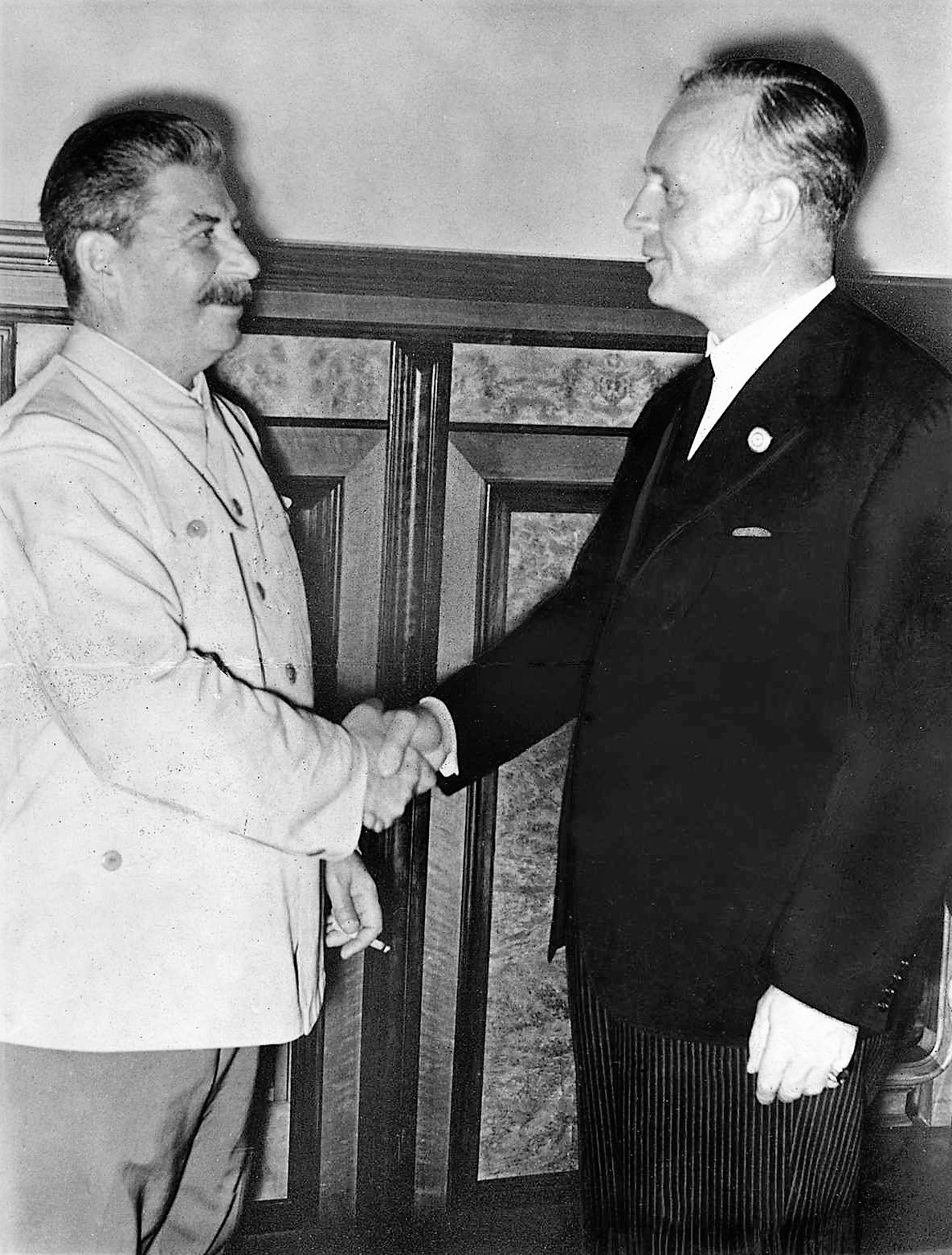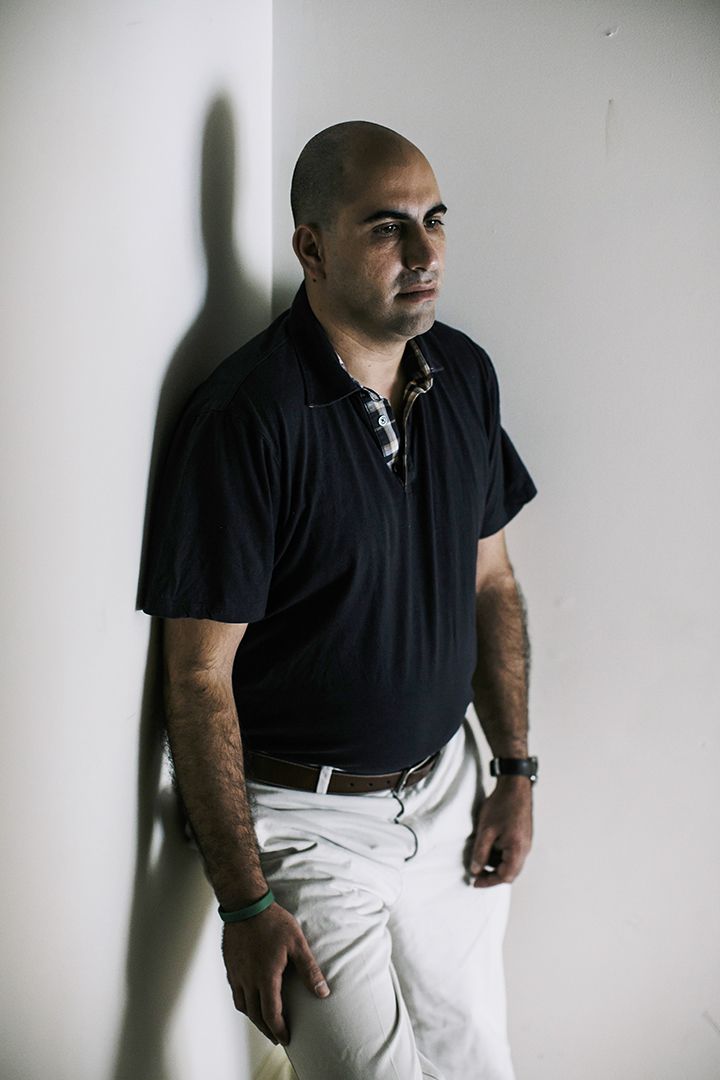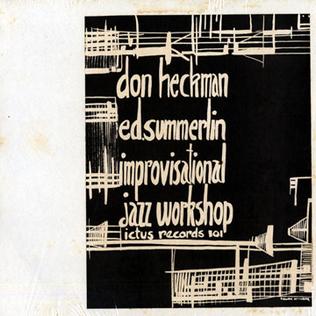By Amanda Petrusich

Joe Clauberg at the Jazz Record Center
There’s a pervasive, romantic notion of the Outsider as Omniscient Loner: preoccupied, brooding, mumbly. He is human—for example, he might read a paperback book that he tugged from the back pocket of his jeans, or gaze intently into a woman’s eyes for a beat too long—but he doesn’t celebrate holidays or use the toilet. He is usually leaning against a wall. This is one way of thinking about it.
Then there are the men—outsiders, also—who routinely congregated at the Jazz Record Center, a long-defunct music shop that once existed on the north side of West 47th Street in Midtown Manhattan, a now touristy stretch better known for its approximations of pizza and dubious (if well-lighted) electronics shops. In the 1940s, the Jazz Record Center became the default clubhouse for a cabal of distinctive gentlemen: exiles, recluses, characters so outsize in their eccentricities that they felt invented, except better. Here there was not a sense—as with the archetypal Outsider—that a choice had been made. Here, the earliest collectors of 78 rpm records found each other.

The Jazz Record Center was operated by Big Joe Clauberg, a chunk of a man with a deeply creased face (his skin appears to fold back on itself, like the underside of a poorly reupholstered chair) and black eyes that expressed a deep aversion to certain kinds of nonsense. He came to New York from the Southwest, had worked as a circus strongman, and stumbled into the used-record business after being offered a few truckloads of cheap records from a wholesale jukebox operator.
“He was a giant,” the collector Pete Whelan told me. “He was very overweight. He would just listen to everybody, hardly saying anything. And he was very generous in his prices. Records that were really worth $10 or $15 then and that would be worth hundreds or maybe thousands now, he would sell for $1.”
Clauberg settled at the 47th Street location in 1941, bolstering his jukebox supply by selling new stock from smaller jazz labels. The store was originally called Joe’s Juke Box, then the Jazz Record Corner, then the Jazz Record Center. Its inventory was jazz heavy but eclectic, including “Everything from Bunk to Monk,” as a 1949 ad in the Record Changer, an early jazz collecting magazine, read. (The “Bunk” in question was almost certainly Bunk Johnson, the beloved New Orleans jazzman who lost both his trumpet and his two front teeth in a bar fight in Louisiana in 1931, but it’s tempting to consider its more colloquial use—one collector’s bunk being another’s prize, after all.)
Clauberg courted (and indulged) a perfect outcast harem. Many of the shop’s most beloved denizens weren’t even patrons, or at least not in the traditional sense. A Greek dishwasher and janitor named Popeye helped keep the place clean, rubbing oil into the floorboards as necessary. According to the collector (and former employee) Henry Rinard, who chronicled his experience working with Big Joe for 78 Quarterly, Popeye was a short, well-muscled man with no teeth, hair, or eyebrows, prone to mumbling to himself for hours “in gibberish not even another Greek could understand.” Clauberg let Popeye crash on the floor at night, and in exchange, Popeye performed additional odd jobs, like bringing Clauberg food from the joint where he washed dishes, cutting his hair, and helping him yank a rotten tooth from his gums using a pair of pliers (that’s what friends are for). Another regular, Abbie the Agent, wore “thick-lensed eyeglasses, smoked continuously, and was seldom sober.” An outcast from a wealthy Connecticut family, Abbie fetched cigarettes and wine for Clauberg, and periodically became so inebriated himself that he passed out on the Popeye-oiled floor. (His other nickname—and I think it’s the better of the two—was Horizontal Abe.) Rinard also wrote about one of Clauberg’s old hobo friends, a guy known mostly as the Sea Captain, who wore a wool hat, raincoat, and heavy, too-big, laceless boots, even in June. The Captain was something of an enigma, even to Rinard: “He was either Swedish or Norwegian; he understood English, but never spoke,” he wrote.
The clientele was no less unique. “It was very interesting,” Whelan recalled. “It was a stop on the way. There would be these characters that would be there. Specialists. One guy who just collected European jazz, named Hal Flaxer. He’s probably still around. I think he went through three or four wives and they all looked identical. I couldn’t tell the difference. They looked like twins of each other.” In her book In Search of the Blues, the scholar Marybeth Hamilton includes what might be the single greatest description of early record collectors flourishing in their natural habitat: “Saturday afternoons they met at Indian Joe’s, where they thumbed through the bins in between swigs from the bottles of muscatel that Pete Kaufman brought along from his store, suspending their searches briefly at three, when a man called Bob turned up with a suitcase of pornographic books.”
There’s only one published photo of the shop, which first appeared in Jazzways and was later reprinted in 78 Quarterly; it’s not even of the interior, but of the rickety wooden stairs leading to the door. The face of each step is painted with an incitement (records, hot jazz records, records 4 sale, step up save a buck, popular bands, hot jazz records), and I can only imagine the half-furious, half-wheezy sounds eager collectors made clomping up them, balls of cash wadded up in their pockets. Regardless of what the inside of the shop actually looked like—and chances are, it was fairly mundane—I like to imagine it crammed with weirdoes bickering in high-pitched voices, nostrils expanding, slowly swarming Bob and his suitcase. I like to imagine myself there, with a record or two tucked under my arm.
James McKune showed up at Big Joe’s nearly every Saturday night at six, and stayed until the store closed at nine, wandering off, on occasion, to eat supper at the Automat around the corner on Sixth Avenue. McKune was likely born somewhere on the East Coast in or near 1910, although no one knows precisely when or where (depending on whom you ask, he was from Baltimore, or North Carolina, or upstate New York). That McKune has no clear origin story—and that his end was equally inscrutable—only amplifies the mythic place he occupies in collecting lore. Maybe more than any other collector, James McKune was defined by his records.
McKune wasn’t the first 78 collector, but he was one of the earliest to single out rural blues records as worthy of preservation, and is arguably the field’s most archetypal figure. At the very least, he established the physical standard. He was flagpole skinny and otherwise nondescript (medium height, tapering hair), prone to wearing the same outfit nearly every day (a white shirt with rolled sleeves, black pants, white socks, black shoes). He had a tough time holding a steady job, and during his time in New York, he worked briefly as a subeditor for the New York Times, a desk clerk at the YMCA, a checker at a South Brooklyn beer distributor, and a mail sorter in a Brooklyn post office. He seemed generally irritated by the necessity of employment, and in a June 1944 letter to the collector Jack Whistance, wrote: “During the day (when it doesn’t rain) I continue my quest for a suitable job in [an] essential industry. In N.Y.C., be it said—not in Newark. I am a particular guy, perhaps alas. The jobs I can have I don’t want. And those I want I can’t get.” (Ironically, US unemployment was at an all-time low in 1944, at just 1.2 percent—about as close to “full employment” as economists believe is possible). According to all reports, he drank like a pro. In his letters to other collectors, he was exacting but not unlikable; his missives are impeccably punctuated and endlessly readable, packed with peculiar asides and unexpected jokes. Although he was constitutionally private—a loner in the most nonromantic sense—and wrote almost exclusively about which records he wanted or had recently acquired, McKune did seem to savor his correspondence. In a 1951 letter to Henry Rinard, he even mentioned his glee about receiving an Easter card from a pal for Christmas. “A delightful variation, which I would have copied but for the lateness of this melancholy December,” he wrote in neat, minuscule script. (He was also prone to hastily changing tone by writing NEW SUBJECT midletter, an underused literary device I aspire to someday employ.)

“Not that it means anything particularly, but he was gay, and I didn’t know that at the time,” Whelan explained to me one night. He and McKune first met at Big Joe’s. “I was at the time interested in getting blues on this particular label called Gennett. There was this guy Sam Collins on Electrobeam Gennett that I liked very much—he was an impassioned tenor. So I met this guy McKune,” he continued. “I was like 23 or 24 and he was 50. He had been collecting since probably the late 30s. Blues. One of the very few. He looked like a scarecrow. He would gesticulate when he talked, very excitedly. You’d find these elbows coming at you, and you kept backing up. I think in the late 1930s he was a reporter for the Long Island Star, and then became, I think, city editor. And then he gave it up and worked for the post office. And then he became an alcoholic.”
Unsurprisingly, McKune was also a bit of a crank. He was wildly discerning, even by collector standards, and owned just 300 records, all tucked into cardboard boxes and stored underneath his single bed at the YMCA on Marcy Street in Williamsburg. He often referred to his listening sessions as “séances” and was required to play records at a low volume so as not to enrage unsympathetic neighbors (thin walls). He fretted endlessly about his own taste. McKune’s desires were expansive, and he didn’t just want to collect the music he loved the most—he wanted to collect the best possible permutations of sound, and for those decrees to be definitive.

McKune supposedly never gave up more than 10 bucks for a 78 (and often offered less than $3), and was deeply offended—outraged, even—by collectors willing to pay out large sums of money, a practice he found garish, irresponsible, and in basic opposition to what he understood as the moral foundation of the trade. He didn’t like the notion that records could generate profit for their handlers: in the fall of 1963, in another letter to Rinard, he referenced his skepticism of a fellow collector, writing, “Somehow, I distrust him. He bought some records from the Negroes in Charleston, S.C. He spent $19 or $20 and sold the records for more than $500.” For McKune, collecting was a sacred pursuit—a way of salvaging and anointing songs and artists that had been unjustly marginalized. It was about training yourself to act as a gatekeeper, a savior; in that sense, it was also very much about being better (knowing better, listening better) than everyone else. Even in the 1940s and 50s, 78 collectors were positioning themselves as opponents of mass culture, and McKune cultivated a fantastic disdain for pop stars as well as the so-called protest singers of the era. He thought, for example, that Woody Guthrie was bullshit, although by 1950 he’d come back around on folk music as a genre, a shift he attributed to getting older. (The career of Glenn Miller, though, was a constant source of jokes.)
I’m not sure what McKune was looking for, exactly. Maybe the same thing we all look for in music: some flawlessly articulated truth. But I know for sure when he found it.
In the 1940s, 78 collecting meant jazz collecting, and specifically Dixieland or hot jazz, which developed in New Orleans around the turn of the 20th century and was defined by its warm, deeply playful polyphony (typically, the front line—a trumpet, trombone, or clarinet—took the melody, while the rhythm section—banjo, guitar, drums, upright bass, piano, and maybe a tuba—supported or improvised around it). Because of its origins, collecting rare Dixieland records in 1942 was not entirely unlike collecting Robert Johnson records in 1968, or, incidentally, now: deifying indigent, local music was a political act, a passive protest against its sudden co-optation by popular white artists. As Hamilton wrote, “it meant training the spotlight on a distinctly black, definitely proletarian art form in an era when, as they saw it, jazz had been tamed, sweetened, and commodified, with white performers like Benny Goodman and Paul Whiteman praised as its consummate practitioners.” But for whatever reason, blues records weren’t of any particular interest to early collectors. “The original 78 collectors despised country blues. They just liked jazz, and there were few exceptions,” Whelan explained. “It was a sharp divide. They thought it was less artistic. They were intellectuals.”
According to Hamilton, in January 1944 McKune took a routine trip to Big Joe’s and began pawing through a crate labeled “Miscellany,” where he found a record with “a sleeve so tattered he almost flicked past it.” It was a battered, nearly unplayable copy of Paramount 13110, Charley Patton’s “Some These Days I’ll Be Gone.” Patton had recorded the track in Grafton, Wisconsin, 15 years earlier, and he’d been dead for less than 10 when McKune first picked it up. Patton was almost entirely unknown to modern listeners; certainly McKune had never heard him before. He tossed a buck at a snoozing Clauberg and carted the record back to Brooklyn. As Hamilton wrote, “… even before he replaced the tonearm and turned up the volume and his neighbor began to pound on the walls, he realized that he had found it, the voice he’d been searching for all along.”
“Some These Days I’ll Be Gone” is one of Charley Patton’s more staid tracks, in both rhythm and narrative. According to Gayle Dean Wardlow and Stephen Calt’s King of the Delta Blues: The Life and Music of Charley Patton, “Some These Days I’ll Be Gone” was “likely conceived for white presentation: it used diatonic intervals and featured the keynote as its lowest vocal tone, a technique Patton usually avoided in singing blues and gospel material.” Wardlow and Calt suspect the tune was conceived for “white square dances and sociables,” where Patton was likely accompanied by a fiddler who’d been tasked with playing lead over his strums. Lyrically, it’s a sweet imploration: don’t take me for granted, Patton warns. “Some these days, I’m going to be leaving / Some these days, I’ll be going away,” he slurs, strumming a faint, bouncing guitar line. For once, he sounds more amused than angry. You’ll see, he seems to grin. Just wait.
Charley Patton changed everything for McKune. I can run an assortment of scenarios—recounting all the fireworks-type stuff I imagine happened when he first dropped a needle to “Some These Days I’ll Be Gone”—but those particular moments of catharsis are too weird and too personal ever really to translate. What’s important is that McKune’s discovery of Patton set off an avalanche of cultural events, a revolution that’s still in progress: blues records became coveted by collectors, who then fought to preserve and disseminate them. In the liner notes to The Return of the Stuff That Dreams Are Made Of, a collection of 78 rarities released by Yazoo in 2012, Richard Nevins called McKune “‘the man’ who set it all in motion, who led blues collectors away from the errors of their wayward tastes… a fantastic, brilliant young man… [his] perspectives had profound influence and resound even today.” In the same notes, Dick Spottswood—in conversation with Nevins and Whelan—spoke about how McKune raised the stakes for everyone, about how things changed: “All I’m saying is that the records themselves as collectible artifacts were not buy or die [before]. They were desirable records but they weren’t life or death. You know, the way they have since turned into.” After McKune, collectors became invested in rural blues. They sought those records with fury, the music was preserved and reissued, and the entire trajectory of popular music shifted to reflect the genre’s influence. A guy from no place, saving music from the same.
James McKune’s naked, strangled body was found, bound and gagged, in a grimy welfare hotel—the Broadway Central—on the Lower East Side of Manhattan in September 1971. Detectives concluded that he had likely been murdered by a man he had solicited for sex; Whelan later called the perpetrator a “homosexual serial killer” with, he thought, five or six other homicides on his record. By then McKune had moved out of the YMCA and was living primarily on the streets of the Bowery among prostitutes and thieves. For those on the lookout for such parallels, McKune’s death did ultimately mirror Robert Johnson’s—who, as Hamilton pointed out, also died under “violent, mysterious, and sexually charged” circumstances. (The itinerant Johnson supposedly keeled over after taking a slug of poisoned whiskey, provided by a man whose wife he’d been eyeing or maybe worse.) Nobody knows for sure what happened to McKune’s record collection, although rumors still flutter up from time to time. It was likely sold, or stolen, or maybe given away bit by bit.
Excerpted from Do Not Sell At Any Price: The Wild, Obsessive Hunt for the World’s Rarest 78rpm Records by Amanda Petrusich. Copyright 2014 © Amanda Petrusich. Reprinted with Permission from Scribner, a Division of Simon & Schuster, Inc.



 Dumb and dumber
Dumb and dumber Dumbest
Dumbest


 Eileen Jones
Eileen Jones
 Frank Sinatra as Frankie Machine
Frank Sinatra as Frankie Machine